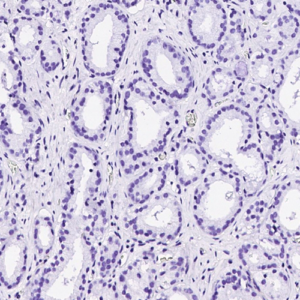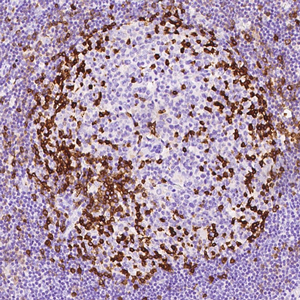p53, also known as Tp53, is a DNA-binding protein which belongs to the p53 family. It contains transcription activation, DNA-binding, and oligomerization domains. p53 protein is expressed at low level in normal cells and at a high level in a variety of transformed cell lines, where it’s believed to contribute to transformation and malignancy. p53 (TP53) is a transcription factor whose protein levels and post-translational modification state alter in response to cellular stress (such as DNA damage, hypoxia, spindle damage). Activation of p53 begins through a number of mechanisms including phosphorylation by ATM, ATR, Chk1 and MAPKs. MDM2 is a ubiquitin ligase that binds p53 and targets p53 for proteasomal degradation. Phosphorylation, p14ARF and USP7 prevent MDM2-p53 interactions, leading to an increase in stable p53 tetramers in the cytoplasm. Further modifications such as methylation and acetylation lead to an increase in Tp53 binding to gene specific response elements. Tp53 regulates a large number of genes (>100 genes) that control a number of key tumor suppressing functions such as cell cycle arrest, DNA repair, senescence and apoptosis. Whilst the activation of p53 often leads to apoptosis, p53 inactivation facilitates tumor progression. It is postulated to bind to a p53-binding site and activate expression of downstream genes that inhibit growth and/or invasion, and thus function as a tumor suppressor. Mutants of p53 that frequently occur in a number of different human cancers fail to bind the consensus DNA binding site, and hence cause the loss of tumor suppressor activity. Defects in TP53 are a cause of esophageal cancer, Li-Fraumeni syndrome, lung cancer and adrenocortical carcinoma.
SKU: KPIH10207
P53
| Pack Size | 100 ul |
|---|---|
| Source | Rabbit |
| Clone | 2 |
| Class | IgG |
| Isotype | IgG |
| Tested Reactivity | Cynomolgus |
| Localization | Nucleus |
| Pretreatment | Thermal Remediation |
| Applicable Tissue | Paraffin Section |
| Positive Control | Human lung cancer |
| Storage Temperature | Store at -20 Degrees |











